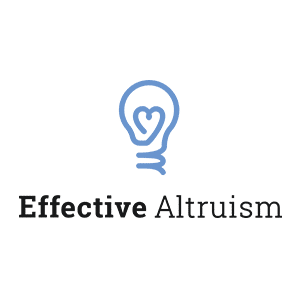 I recently came across a comment from William MacAskill that helped me to think a bit more about Effective Altruism (EA) and utilitarianism. Previously I hadn’t really thought it possible to move beyond the association between them, especially with Peter Singer and William MacAskill as central figures. However, it does seem to be the case that Effective Altruism is something other than utilitarianism.
I recently came across a comment from William MacAskill that helped me to think a bit more about Effective Altruism (EA) and utilitarianism. Previously I hadn’t really thought it possible to move beyond the association between them, especially with Peter Singer and William MacAskill as central figures. However, it does seem to be the case that Effective Altruism is something other than utilitarianism.
In relation to Effective Altruism for Animals (EAA) the door seems to be held open for ideas that tend to be rooted in different perspectives, whilst also appearing to regard the incorporation of different approaches (diversity) as beneficial to the movement. Of course, this is not going to be an easy thing to accomplish, and arguably has not managed to do so up to now, or indeed will do so in the near future. However, progress with this issue could potentially be a very useful thing, as it seems helpful to foster an environment where ideas can be discussed equally, despite our own preferences (perhaps biases) toward different perspectives.
This isn’t a straightforward proposition, and it might require a fair understanding of different ideas alongside the resources to do that work. Further to this, we also need to ensure people are included who are already engaged in their own struggles, which can be inextricably tied into those of other animals. So we could also ask why it is people might prioritise something like Effective Altruism, if the organisation itself doesn’t appear inherently relatable?
With this important issue outstanding, we might also move to consider that as Effective Altruism isn’t ‘Effective Justice’ and isn’t Effective Utilitarianism (though some perhaps disagree), then what would it be in an animal movement context? I believe it could be an approach which acts as a system to improve overall movement effectiveness independent of which framework people are using. However, this does require that people holding different perspectives do get involved / are willing to take part / are given a platform, whilst there is also a general spirit of collaboration in this process beyond the fact we may not believe other Effective Altruists (who hold different philosophical perspectives) are supportive of our own approach. For instance, I am not personally in agreement with a degree of Peter Singer’s work, yet that doesn’t necessarily present a barrier to becoming involved with Effective Altruism to a certain extent, because it doesn’t mean to say there isn’t something to learn from the movement, and to give to the movement in terms of contributing time, ideas and perhaps some resources generally.
However, in order to be involved in such a way which isn’t relentlessly critical, there does need to be some agreement about what may or may not constitute a reasonable outcome within Effective Altruism. This would mean that criticism isn’t necessarily focussed on rejecting an idea outright, but on adjusting ideas to become more useful / effective as viewed from both inside and outside of the movement. This means the guiding principles of EA are adhered to, whilst people can identify where various comparisons and evaluations are being made that are integral to Effective Altruism. I think one consequence could be that certain outcomes do not reflect the best thing from any particular perspective, yet it could ameliorate various ‘bad things’ by applying values consistently, and this may lead to an improved representation of different positions with better outcomes moving forward.
Some practical implications.
As most groups that are recommended by Animal Charity Evaluators (ACE) appear to support a mainstream ‘pragmatic’ perspective (partly due to criteria, willingness to conform, support from movement leaders and associated privilege) then it is going to be incumbent upon those groups as recipients of EA money to take reasonable steps to consider rights based issues in their work. This isn’t to say they have to do rights based work, instead I would say it is practically impossible to bring the two together, though there is a large degree of overlap the perspectives are often quite differently aligned. This will mean however, that we also need to compensate for this issue if we are not going to generate negative outcomes in the broader movement (particularly through declining diversity / crowding out).
When we locate different perspectives we also know there is often contention, yet much of this could be viewed as beneficial or useful in terms of improving approaches, so it should not necessarily lead to stagnation or division. For example, out of the top groups recommended by ACE it could be possible the Good Food Institute (GFI) would be widely supported. Yet whilst the organisation has an interesting agenda, there are issues with the approach that could be addressed, such as how a philosophy of animal liberation appears to be neglected. In this sense, I think it is almost preferable were someone more ‘neutral’ and even non-vegan to lead the group, as it seems there may be limited value in expending resources relating to the animal movement when this is not the audience. Two further issues spring to mind, such as bringing a conflict of reducetarian interest into the vegan movement, and diminishing movement effectiveness through support for the Animal Industrial Complex. These are both neglected issues that require evaluation, yet this doesn’t mean to say GFI is going to be particularly controversial overall, particularly if its position were clarified in relation to the advocacy movement.
A brief consideration of two ‘mainstream’ advocacy approaches.
Reducetarianism.
Reducetarianism is an interesting proposition in relation to Effective Altruism. It represents an idea developed by Brian Kateman who has a track record at the Centre for Effective Altruism and the Good Food Institute. In this regard, an interesting question to consider is the degree to which Effective Altruists are likely to support it? I would say utilitarians could do so quite easily, at least as part of a broader project. Though rights activists are likely to be more sceptical in relation to the inherent association with carnism. However, i do not believe that agreement over this approach would be necessary, instead a general sense of indifference where apparent negative consequences were minimised could be sufficient to make it reasonably acceptable.
I would suggest this ‘acceptance’ could be located in the tendency of rights activists to prioritise work around one of the greatest obstructions to animal liberation (animal eating), and arguably reducetarianism as it presently stands creates an issue here. This becomes a particular concern where the carnistic defences are brought into the equation, so I would argue these defences ought to be minimised overall rather than utilised ‘strategically’. For instance, we would need to accept that rights activists are likely to support a Vegan Society definition* of veganism in order to build a movement around that idea (with consistency as far as possible), and for this to happen people are going to address the carnistic justifications within reducetarianism (I don’t eat much meat / it’s not all or nothing / animals are food). Indeed, the same can be applied to vegetarianism or flexitarianism, despite these identities regularly being viewed as steps in the ‘right’ direction. In this way I believe other activists correctly view this as a potential sticking point, and where we find the intent to do as much as we can for other animals, I believe this ought to be supported and encouraged so people can also be moved to join a social movement for change that is based on rights ideas.
To further address the reducetarian issues, we could also question the positioning of veganism as ‘extreme’ or ‘purist’, whilst saying it isn’t ‘all or nothing’ appears to be unhelpful overall. This particular idea seems to be used as leverage to draw attention from a speciesist society, whilst consequently shutting down consideration for the vegan perspective. A further point is that it seems to be a less than good idea to say that vegans are reducetarians, because although vegans have reduced their animal consumption, it is plausible to consider they wouldn’t necessarily associate with reducetarianism (carnism), so rather than ending ‘conflict’ it may exacerbate some issues. I think it is fair to say that some of the consequences of reducetarianism are yet to receive much attention, although there are examples of areas that have been considered.
Following on from these points, I don’t believe it is a reasonable expectation that people wouldn’t consistently argue points in favour of veganism outside of Effective Altruism. However, there do seem to be attempts to convince people otherwise, for instance through the ‘Centre for Effective Vegan Advocacy’ (CEVA). In opposition to this, I would suggest that rights activists tend to have less interest in appealing to the systems of power most utilitarians appreciate, indeed it could be argued that rights activists tend to favour building from the ground up, rather than from the top down, and this would take on a different appearance within the movement.
In terms of the organisations generally taking a more casual approach to ‘vegan’ advocacy, then it likely depends on the claim that is being made on veganism and how that affects people who are trying to relate to one another in the broader movement, and in relation to advocacy itself. In this instance therefore, it isn’t enough to claim that vegans are not the audience, and that relating to definitions wouldn’t be necessary, or that doing so would even be harmful. This is because social movement regulation, sometimes referred to as ‘policing’ is also important. In fact, very important in terms of identity, belonging, authenticity and movement building, whilst this isn’t to say there aren’t issues that need to be regularly addressed. Yet veganism remains a social movement in itself, whilst existing as part of the broader animal movement, and this needs to be acknowledged and accounted for in the work of Effective Altruists.
I tend to believe that when animal groups associated with Effective Altruism choose to start talking about veganism it probably ought to be in relation to making a case for that, or at least realistically presenting what it is, which would conversely undermine the reasons for reducetarianism. As far as the larger groups are concerned the manner of communicating and advocating veganism probably hasn’t reached a reasonable standard because of the impact of ‘pragmatism’, and it could be more effective to largely allocate this work to the grassroots movement.
I think EAs could recognise and support that work and likely already do to an extent (although i am sceptical of the way in which the term ‘grassroots’ is often used). We can also note that groups who are principally engaged in other than vegan advocacy (principally as compassionate carnism), are the beneficiaries of a rather large proportion of EA resources through ACE and the Open Philanthropy Project. Following from this I believe we could make a reasonable case for prioritising the dispersal of some funds to benefit a larger number of smaller groups, this in turn could include supporting groups that have good processes in place, or where training could be provided to enhance processes, and one benefit here would be to increase competition for funding within EA.
I think finally, it is also worth noting there appears to be a significant difference between non-vegans and vegans advocating reducetarianism, which often seems to take place under the guise of ‘pragmatism’. Whilst we can also make a similar claim for veganism that is often made for reducetarianism, where vegans engaging with someone to incorporate vegan alternatives could reasonably lead to a 10% reduction in exploitation. So I believe there needs to be a substantial evidence base before we argue in favour of vegans replicating carnistic reducetarian claims, certainly more than the one which presently exists. In this regard, I believe some caution is warranted from Effective Altruists, particularly as this approach would likely benefit from further evaluation, even as it has been widely supported by mainstream groups.
Welfare.
In terms of welfare it has sometimes been argued that rights activists could take part in this work in relation to the industry, if it were clear that people were also asking for veganism and opposing speciesism. However, given the backdrop of the animal movement in this area it does not seem particularly worthwhile to try and carve out a niche. In relation to this, people sometimes speak of ‘authentic’ welfare rather than ‘welfare that deceives’ (Lee Hall, 2016) to differentiate between the issue of caring in a system of exploitation and supporting that exploitation. I think that even were people to argue in favour of a standard welfarism with the aim of harm reduction (without reducing the number of exploited animals), this could gradually receive less emphasis in Effective Altruism and the broader giving movement. This is particularly the case when we also consider potential gains to human health and the environment through reduction.
Advocating to change the way we view animals, whilst simultaneously improving the way people can access the vegan lifestyle, could become a higher priority as it appears to offer greater simplicity and clarity. In accordance to EA this might be favourable, as those areas that may be agreed upon could also carry greater weight when it is apparent they would more readily reflect movement cohesion. It is also worth noting that welfarism disrupts the market for plant based products, particularly by making over reaching claims on animal wellbeing in systems of exploitation, whilst the impact of negotiating a settlement over acceptable harms are problematic. I also believe that when we say less harm is better than more harm, there exist issues if we endorse specific areas of harm.
Concluding thoughts.
Effective Altruism it seems is not a space to argue over whether one philosophical approach is better than another, but a place to increase accountability to ensure that we are in fact thinking about best practice and how it is we value the principles of Effective Altruism. We could get bogged down in a form of intransigence as one group prefers one action over another, yet if Effective Altruism reasonably meets a certain set of standards then that should be more important. Whilst there may also be some ‘flexibility’ given the utilitarian weighting, though it ought not be so flexible the values of Effective Altruism become increasingly difficult to discern.
As it stands a central issue with EAA has been the utilitarian influence. This has a number of consequences, one of which relates to the diversity of ideas and approaches in EAA, and a subsequent question of their authentic representation when they do appear. I believe that moving forward there can be some uncertainty as to whether utilitarians will effectively equivocate in relation to EAA (with particular regard to institutions), and in such a way that would allow for different approaches and organisations to flourish.
Further links.
Beyond the Echo Chamber.
Considering Considerateness: Why communities of do-gooders should be exceptionally considerate.
Diminishing returns.
Effective Altruism as Utilitarian Equivocation.
Frameworks for selecting interventions.
Social attitudes towards vegetarians. (“Do Gooder Derogation”)
The Guiding Principles of Effective Altruism.
What is Effective Altruism?
* The definition of veganism from the Vegan Society: “A philosophy and way of living which seeks to exclude—as far as is possible and practicable—all forms of exploitation of, and cruelty to, animals for food, clothing or any other purpose; and by extension, promotes the development and use of animal-free alternatives for the benefit of humans, animals and the environment. In dietary terms it denotes the practice of dispensing with all products derived wholly or partly from animals.”

 In
In  I recently came across a
I recently came across a  The following ideas represent some really helpful advocacy tips that featured in Tom Regan’s War Analogy
The following ideas represent some really helpful advocacy tips that featured in Tom Regan’s War Analogy  The Vegan,
The Vegan, 